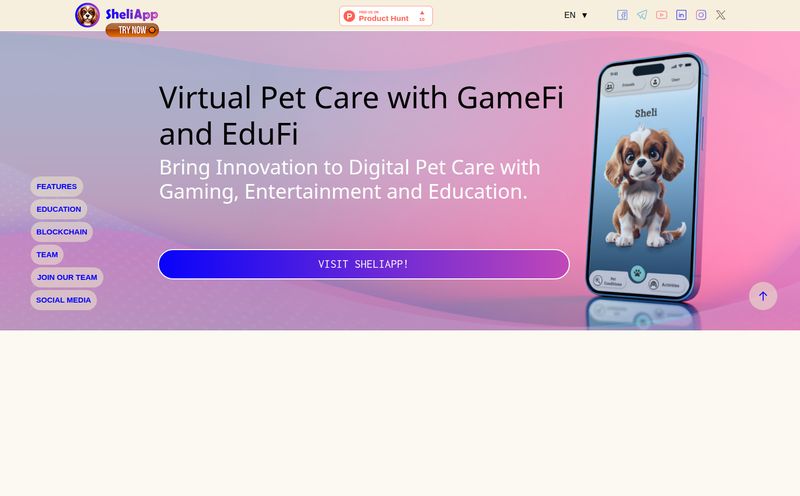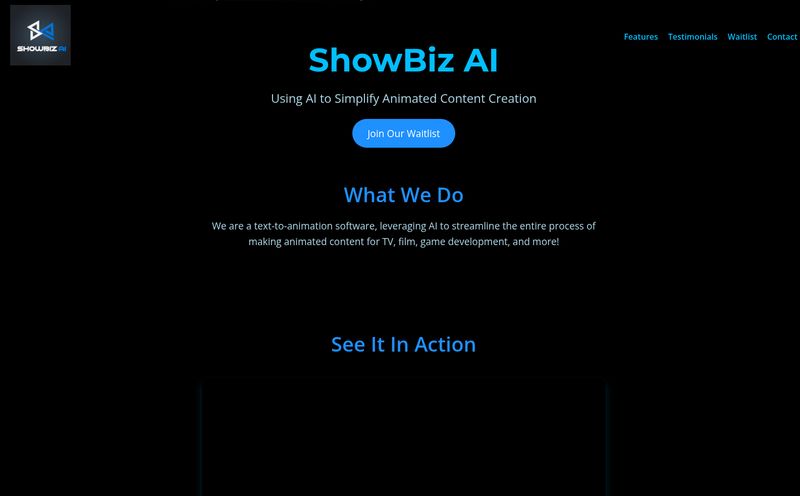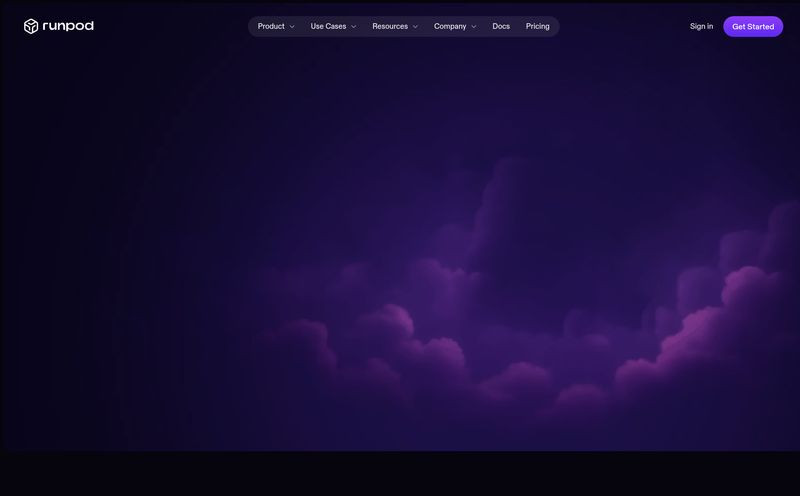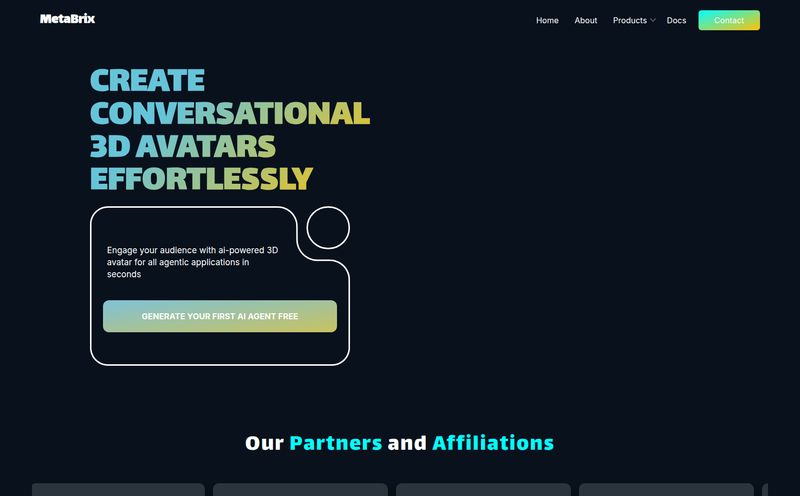For years, I’ve told clients that 3D product viewers and AR experiences are the next big thing for e-commerce conversions. And for years, they've looked at me like I just asked them to build a rocket ship. The cost, the time, the sheer technical headache of 3D modeling... it's always been a barrier. A big one.
I remember trying to learn Blender in my early days. It was a humbling experience, to say the least. Hours of tutorials, a million vertices, and my final creation looked like a potato that had been in a minor car accident. So when a tool comes along promising to turn simple photos into high-quality 3D models in two minutes, my professional curiosity—and my personal trauma—get piqued.
That tool is VisionAR. And I've been kicking the tires on it for a bit. Is it just another AI hype train, or is it something that could actually change the workflow for marketers, game devs, and online store owners? Let's get into it.
So What Exactly is VisionAR?
At its core, VisionAR is an AI platform that takes your 2D inputs and spits out a 3D model. It’s like having a pocket-sized 3D sculptor on call, ready to work at a moment’s notice. The magic comes from its suite of AI models, each designed for a slightly different task.
You can feed it a single photo (V-Pix), a few photos from different angles (V-Poly), or even just a simple sketch (V-Letra), and it gets to work. This isn't just a gimmick; it's a genuine attempt to solve the biggest problem in 3D creation: the barrier to entry. No more gatekeeping by complex software. You take a picture, you get a model. Simple as that.
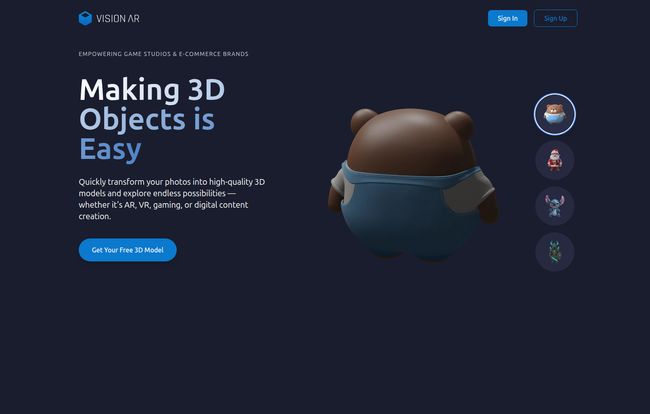
Visit VisionAR
The models it generates are downloaded as GLB files, which is the standard for web-based 3D and AR. This means you can take the output and pretty much immediately drop it into an e-commerce site for a 360-degree view, use it in an AR app, or import it into a program like Blender for more polishing. It’s a pretty smart workflow.
The Different Flavors of VisionAR's AI
VisionAR isn't a one-trick pony. It has a few different AI engines running under the hood, and they're expanding.
- V-Pix: This is your workhorse. Give it one good, clean product photo and it builds a 3D asset from it. Fast. We're talking under two minutes.
- V-Poly: A step up. You provide front, back, left, and right images. This gives the AI more data to work with, resulting in a more precise reconstruction. Still ready in just a couple minutes.
- V-Letra: This one feels like a bit of sorcery. You scribble a concept on a virtual napkin, and the AI turns that sketch into a reference image which it then uses to generate a model. For rapid prototyping, this is just wild.
And they have more coming. VNeuro promises to build high-polygon assets from up to 150 photos, which sounds like it's stepping into serious photogrammetry territory. Then there's VFuse, a mobile-only scanner for instant product capture. They're clearly thinking about the whole pipeline, from a quick idea to a high-fidelity final asset.
Who Should Be Paying Attention to This?
Okay, so who is this actually for? In my mind, two groups should have their ears perked up right now.
E-Commerce Brands and Marketers
This is the obvious one. Studies, like ones often cited by Shopify, have shown that 3D models and AR can significantly boost conversion rates. VisionAR itself claims a 40% increase for some users. Why? Because customers can see the product from every angle, place it in their room with AR, and get a much better feel for it than a flat image could ever provide. VisionAR makes this accessible. Instead of a multi-thousand dollar project per SKU, you're looking at a few bucks and a few minutes. That's a massive shift.
Indie Game Developers and Small Studios
Creating game assets is a grind. It's time-consuming and can be a huge bottleneck in development. The ability to quickly create a 3D model from a concept sketch or a photo of a real-world object could be a huge time-saver. Are these models going to be your final, hero assets for a AAA game? Probably not without some cleanup. But for prototyping, background props, or stylized games? Absolutely. It gets an idea into the game engine fast, and that speed is invaluable.
Breaking Down the VisionAR Pricing
Alright, let's talk money. The pricing structure is credit-based, which is pretty common for these kinds of AI services. I've put the main tiers into a table so it's easier to digest. They seem to have updated their pricing from what's in the image, so I'll reflect the prices shown on their main page ($11.99, $34.99, $59.99).
| Plan | Monthly Cost | What You Get |
|---|---|---|
| Free | $0 | 125 credits (about 5 models), community support, low processing priority. No asset license. |
| Basic | $11.99 | 1000 credits (~40 models), API access, standard priority, and crucially, you own the asset license. |
| Pro | $34.99 | 4000 credits (~160 models), API access, higher priority processing. You own the license. |
| Advanced | $59.99 | 8000 credits (~320 models), API access, even higher priority. You own the license. |
| Enterprise | Custom | Unlimited models, highest priority, dedicated support, and more. |
A quick word on this: the asset license is the most important detail here. The Free plan is great for trying it out, but if you want to actually use these models commercially in your store or game, you need a paid plan. For my money, the Basic plan is the sweet spot for a freelancer or a small business to get started and see a real return.
My Unfiltered Thoughts and Where It Fits
I've seen a lot of AI tools that promise the world and deliver a blurry, unusable mess. VisionAR... isn't that. The quality is genuinely impressive for the speed and input. The models are clean. The textures are decent. Its not going to replace a senior 3D artist for a blockbuster film, but that's not the point.
The point is speed and accessibility. It democratizes a skill that was previously locked behind a steep learning curve and expensive software. The fact that I can take a photo of a coffee mug on my desk and have a usable 3D model of it on my website in less time than it takes to brew the coffee... that's powerful stuff.
Some people in the 3D industry might scoff, but they're missing the point. This isn't about replacing artists; it's about empowering creators. It's a tool that can be part of a larger workflow, not necessarily the entire workflow itself. It generates a fantastic starting point that an artist can then refine and perfect.
Frequently Asked Questions about VisionAR
- 1. What format do the 3D models come in?
- Models are downloaded in the GLB format. This is a highly compatible format perfect for web applications, AR, and can be easily imported into most 3D software like Blender or Unity.
- 2. Can I really use the models for my business?
- Yes, but you need to be on a paid plan (Basic, Pro, Advanced, or Enterprise). These plans grant you an asset license, meaning you own the models you create and can use them commercially.
- 3. How good is the quality from just a single photo?
- It's surprisingly good! The AI makes some intelligent guesses about the back and sides. For the best, most accurate results, using the V-Poly feature with multiple photos (front, back, sides) is the recommended approach for professional use.
- 4. What is a 'credit' and how many do I need per model?
- Credits are the currency of the platform. Generating one standard 3D model typically costs 25 credits. So, the 1000 credits on the Basic plan would get you around 40 models per month.
- 5. Do I need 3D modeling experience to use VisionAR?
- Absolutely not. That's the main appeal. If you can take a photo or draw a simple sketch, you have all the skills you need to get started. The platform is designed to be user-friendly for beginners.
Is It Time to Jump on the AI 3D Bandwagon?
Look, the creative and marketing worlds are changing fast. AI isn't a boogeyman coming for our jobs; it's a new class of tool that can take the grunt work out of our processes. VisionAR strikes me as one of the most practical and immediately useful AI tools I've seen in a while.
It solves a real, expensive problem for a huge number of businesses and creators. If you've been on the fence about incorporating 3D into your projects because of the cost and complexity, this might be the sign you've been waiting for. With a free plan to test the waters, there's really no reason not to give it a shot. You might be surprised at what you can create in just a few minutes.
Reference and Sources
- VisionAR Official Website: A direct link to the platform is not available, but you can search for 'VisionAR AI 3D' to find their homepage.
- Blender Foundation: https://www.blender.org/
- Shopify on AR in E-commerce: https://www.shopify.com/enterprise/augmented-reality-ecommerce
- Khronos Group on glTF/GLB format: https://www.khronos.org/gltf/
